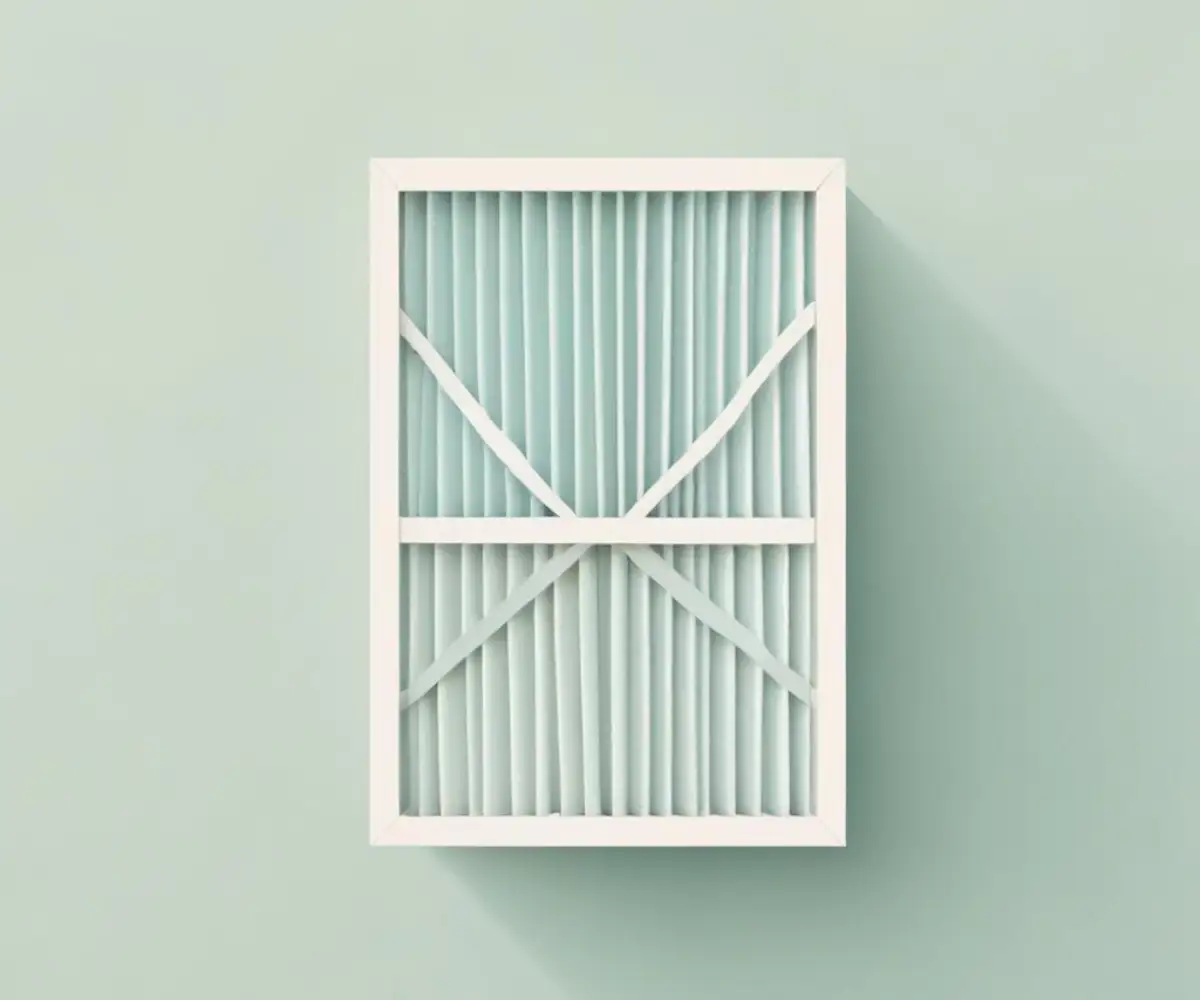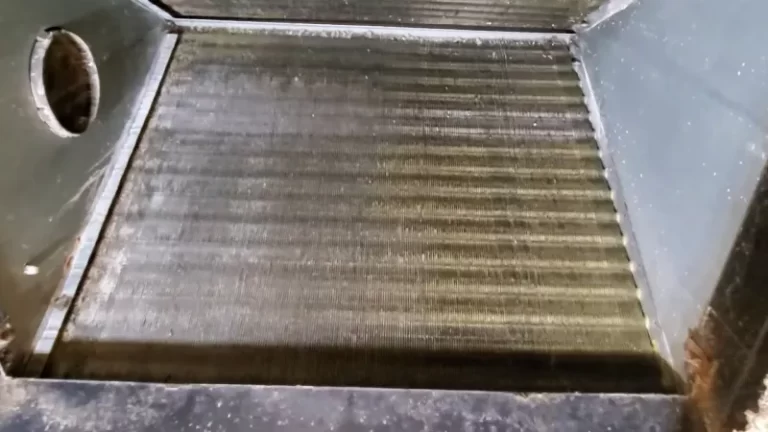R15553 Air Filter Underperforming? Your Ultimate Fix-It Guide
You notice your energy bills creeping up. The air in your home feels stuffy, and dust seems to settle just moments after you’ve cleaned. These are common frustrations for homeowners, often pointing to a single, overlooked component in your HVAC system: a struggling air filter.
An inefficient or clogged air filter can be the root cause of poor indoor air quality, reduced system performance, and even costly repairs down the line. The R15553 air filter, a specific component designed for certain systems, is no exception. This guide will explore everything you need to know about this filter, from its core function to how to ensure it’s working at peak performance for a healthier, more efficient home.
You'll Learn About
Decoding the R15553: More Than Just a Filter
The R15553 is not a generic, one-size-fits-all filter. It is an Original Equipment Manufacturer (OEM) part primarily designed for specific fan coil units from brands like Bryant and Carrier. Understanding its specifications is the first step to ensuring you are using the right component for your system.
What the Numbers Mean
The designation “R15553” is a manufacturer part number. It’s often associated with filters of a specific dimension, typically around 21.5 x 23.5 x 1 inches. These filters are designed to fit perfectly into the filter rack of compatible models, such as the Carrier FB4, FC4, and FX4 series, among others. A precise fit is crucial for preventing air bypass, where unfiltered air slips around the edges of the filter.
The Technology Behind Cleaner Air
Many R15553 filters are washable “hog hair” style filters, often featuring a metal frame. These are different from the common disposable pleated filters. Their design is focused on being reusable, though some users express concern that they may not capture smaller particles as effectively as high-MERV pleated filters and can be difficult to clean thoroughly. The primary goal is to protect the HVAC equipment from large debris, but their impact on fine airborne particles might be limited.
The High Cost of Neglect: Dangers of a Dirty R15553 Filter
Ignoring your R15553 air filter is a recipe for trouble. A filter clogged with dust, pet dander, and other debris can trigger a cascade of negative effects that impact your wallet, your health, and your HVAC system’s longevity.
Suffocating Your HVAC and Your Budget
When an air filter is dirty, it severely restricts airflow. Your HVAC system’s fan motor must work significantly harder to pull air through the dense mat of accumulated grime. This increased effort leads directly to higher electricity consumption and noticeably larger energy bills. It’s like trying to breathe through a cloth—the system struggles, and efficiency plummets.
When Your Air Becomes the Enemy
A compromised R15553 filter fails at its primary job: cleaning the air. Allergens like pollen, mold spores, and pet dander, which should be trapped, are instead freely circulated throughout your home. This can worsen allergy symptoms and create respiratory issues, turning your home from a sanctuary into a source of discomfort. Issues can be compounded if you use certain appliances; for instance, a poorly maintained humidifier can release mineral dust that further clogs your furnace filter, adding to the problem.

The Path to Premature System Failure
Restricted airflow is one of the quickest ways to damage your HVAC system. In the summer, it can prevent proper cooling and cause the evaporator coils to freeze over. In the winter, it can lead to the furnace overheating, which may trip safety limits or even damage the heat exchanger—a critical and expensive component. Continuous strain on the blower motor can also lead to an early burnout.
A Fresh Start: Installing Your R15553 Air Filter Correctly
Proper installation is key to your filter’s performance. Fortunately, it’s a straightforward process that takes only a few minutes and requires no special tools.
Pre-Installation Checklist
Before you begin, ensure you have the correct replacement filter. Double-check the dimensions and part number against your system’s manual or the old filter. Having the right filter on hand makes the job quick and easy.
The 5-Minute Replacement
First, turn off all power to your HVAC unit at the thermostat and the breaker for safety. Next, locate the filter access panel on your indoor air handler. Slide out the old, dirty filter and take a moment to inspect it, noting the direction of the airflow arrow printed on the frame. Insert the new R15553 filter, making sure the arrow points in the same direction—away from the return duct and toward the main unit. Finally, replace the cover and restore power.
Troubleshooting a Stuck Filter
Sometimes, humidity or debris can cause a filter to get jammed in the slot. If this happens, avoid yanking it forcefully, as this can damage the filter or the housing. If your AC filter is stuck and won’t budge, try to gently wiggle it loose or use pliers to get a better grip on the frame. Ensuring the system is off and being patient is key.
Beyond the Basics: Optimizing Your Filter’s Performance
Simply replacing your filter is good, but optimizing its use is even better. A few extra steps can enhance its effectiveness and protect your HVAC system even more.
Rethinking the Replacement Schedule
The standard “every 90 days” rule for filter replacement is just a guideline. The ideal frequency depends heavily on your specific home environment. Households with pets, smokers, or those located in areas with high pollen or dust levels may need to replace their filters monthly. A good practice is to visually inspect the filter every 30 days and change it when it appears visibly dirty.
| Household Condition | Recommended Filter Change Frequency |
|---|---|
| Single Occupant, No Pets | Every 90 Days |
| Average Family, No Pets | Every 60 Days |
| Household with One Pet | Every 30-45 Days |
| Household with Multiple Pets or Allergies | Every 20-30 Days |
The Critical Importance of a Perfect Seal
One of the most overlooked aspects of filter efficiency is the seal. Even a small gap between the filter frame and the housing can allow a significant amount of unfiltered air to bypass the filter media entirely. This “dirty air” goes straight into your HVAC system, depositing dust and debris on sensitive components like the evaporator coil and blower motor, diminishing efficiency and leading to potential damage.
Ensure your R15553 filter fits snugly in its slot. If you notice any gaps, consider adding foam weatherstripping to the filter housing door to create a tighter seal. This simple, low-cost modification ensures that nearly 100% of the air is forced through the filter, maximizing its cleaning power and protecting your system.
A Holistic Approach to Clean Air
An air filter is just one component of a larger system. To truly optimize your home’s air quality and HVAC efficiency, consider the entire system. Keep your supply and return vents clean and unobstructed by furniture. Periodically inspect your ductwork for any leaks or damage. In some cases, you may even want to explore professional services like duct cleaning or sealing to ensure the entire system is operating at its best. If you have unused rooms, learning how to properly cap off an air duct can also improve overall system efficiency.
R15553 Filter FAQ: Your Questions Answered
Navigating the specifics of HVAC parts can be confusing. Here are answers to some of the most common questions about the R15553 air filter.
Can I Wash and Reuse the R15553 Filter?
Yes, many R15553 filters are the washable “hog hair” or electrostatic type. However, it’s crucial to clean them properly by rinsing water in the opposite direction of the airflow. Ensure the filter is completely dry before reinstalling it to prevent mold and mildew growth. Despite being washable, some users prefer to switch to disposable pleated filters for better filtration of smaller particles.
What is the MERV Rating of an R15553 Filter?
The MERV (Minimum Efficiency Reporting Value) rating for a standard washable R15553 filter is typically low, often in the 1-4 range. This means it is effective at capturing large particles like lint and dust but less so for microscopic particles like pollen, mold spores, and bacteria. If higher filtration is desired, you would need to look for a disposable pleated alternative in the same size with a MERV 8 to 13 rating.
Where Can I Buy an R15553 Filter?
The R15553 filter and its equivalents are available through various HVAC parts suppliers online and in-store. You can find them by searching for the part number “R15553” or associated numbers like “317659-405” and “KFAFK0412XXL”. Be sure to purchase from a reputable dealer to ensure you receive a genuine, quality product.
The Clear Choice for a Healthier Home
Your R15553 air filter is more than just a piece of mesh; it is a frontline defender for your home’s air quality and the health of your HVAC system. By understanding its specific role, committing to a regular maintenance schedule, and ensuring a proper fit, you can dramatically improve your system’s efficiency and the air you breathe.
Regular attention to this simple component prevents high energy bills, protects you from airborne allergens, and helps you avoid thousands of dollars in potential HVAC repairs. Make the smart choice to prioritize your air filter—it’s one of the easiest and most impactful investments you can make in your home’s health and comfort.

